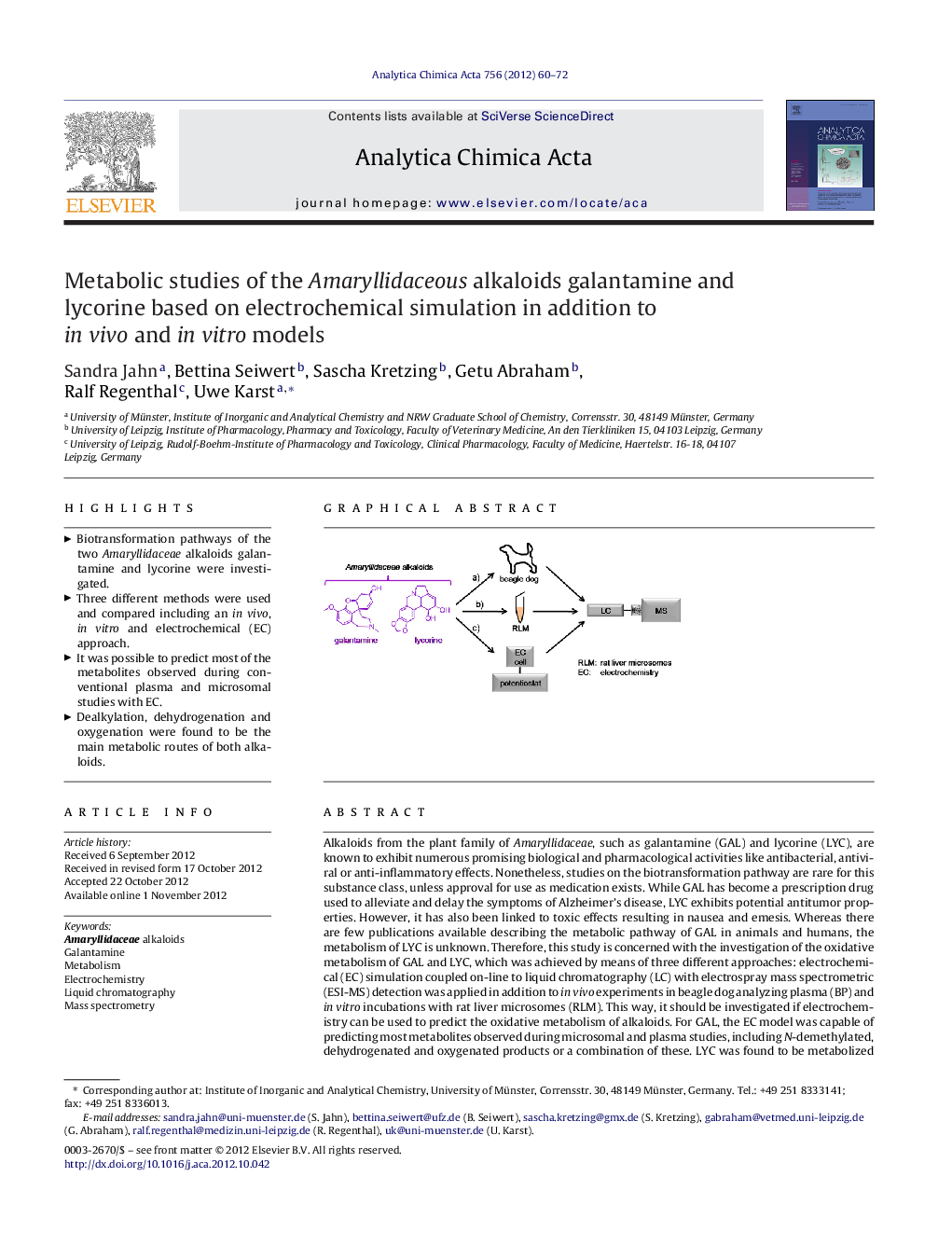| Article ID | Journal | Published Year | Pages | File Type |
|---|---|---|---|---|
| 1165727 | Analytica Chimica Acta | 2012 | 13 Pages |
Alkaloids from the plant family of Amaryllidaceae, such as galantamine (GAL) and lycorine (LYC), are known to exhibit numerous promising biological and pharmacological activities like antibacterial, antiviral or anti-inflammatory effects. Nonetheless, studies on the biotransformation pathway are rare for this substance class, unless approval for use as medication exists. While GAL has become a prescription drug used to alleviate and delay the symptoms of Alzheimer's disease, LYC exhibits potential antitumor properties. However, it has also been linked to toxic effects resulting in nausea and emesis. Whereas there are few publications available describing the metabolic pathway of GAL in animals and humans, the metabolism of LYC is unknown. Therefore, this study is concerned with the investigation of the oxidative metabolism of GAL and LYC, which was achieved by means of three different approaches: electrochemical (EC) simulation coupled on-line to liquid chromatography (LC) with electrospray mass spectrometric (ESI-MS) detection was applied in addition to in vivo experiments in beagle dog analyzing plasma (BP) and in vitro incubations with rat liver microsomes (RLM). This way, it should be investigated if electrochemistry can be used to predict the oxidative metabolism of alkaloids. For GAL, the EC model was capable of predicting most metabolites observed during microsomal and plasma studies, including N-demethylated, dehydrogenated and oxygenated products or a combination of these. LYC was found to be metabolized far less than GAL in the animal-based approaches, but several EC oxidation products were generated. Some principal metabolic routes could successfully be correlated for this alkaloid as well, comprising dehydrogenation, dehydration to ungeremine and oxygenation reactions.
Graphical abstractFigure optionsDownload full-size imageDownload as PowerPoint slideHighlights► Biotransformation pathways of the two Amaryllidaceae alkaloids galantamine and lycorine were investigated. ► Three different methods were used and compared including an in vivo, in vitro and electrochemical (EC) approach. ► It was possible to predict most of the metabolites observed during conventional plasma and microsomal studies with EC. ► Dealkylation, dehydrogenation and oxygenation were found to be the main metabolic routes of both alkaloids.
